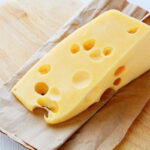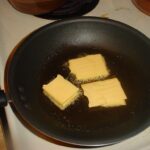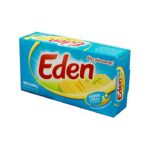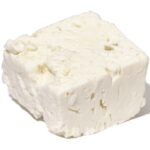Cheese tastes great. Cheese tastes even better melted. Toasted cheese sandwiches, lasagne, pizza and a host of other recipes use a melted form of cheese in them. Cheese is however not an easy thing to melt and it’s very composition is the main reason behind this difficulty. Melting cheese the wrong the way can produce many undesirable results ranging from discolouration and separation to loss of taste. There are 3 great ways to melt cheese if you have it in the form of a block. While slicing or shredding the cheese may provide an easier experience if for some reason you cannot apply any of these treatments before melting the cheese these methods will work perfectly for you. Let’s get to know cheese and why it is so difficult to melt it.
Contents
Cheese
Cheese is a dairy product that is made in a wide variety of ways that produce a multiplicity of variations in taste, texture, colour, smell and applications. There are thousands of different varieties of cheese with each continent in the world having its own cheese varieties that originate from it. The thousands of varieties can be split into 7 different types of cheeses based on their processes. The 7 types are Fresh such as Cottage cheese, Aged Fresh such as Mozzarella, Soft White such as Camembert, Semi-Soft such as Raclette, Hard such as Cheddar, Blue such as Gorgonzola and Flavour added such as Pecorino with truffles. Annual global cheese sales were estimated at around 20 million tonnes for the year 2019.
Which Cheeses Melt Well
To understand the difficulty with melting cheese we have to look at the process of making cheese. Cheese is produced from milk curds which are in some cases cooked or soaked in water, an acidic agent or the whey from the milk. A variety of animals milk is used including cows, sheep, goats and water buffalo. Using the 7 types of cheeses we highlighted before are based on the process of making them. The best cheese types for melting are semi-soft, some hard cheeses and blue cheeses. The flavoured cheeses depend of course on their texture and maturing process. Cheeses such as cheddar and mozzarella have high-fat content and are high in moisture so will melt well. Cheeses like parmesan and pecorino do not melt well as they have very little moisture in them and are quite dry. Fresh cheeses blend well but do not melt very well.
Melting Block Cheese Using a Microwave
You can melt block cheese using a microwave. To do this you will need a microwave-safe bowl, cornstarch and evaporated milk. To get the timing right you should have your cheese out of the fridge for 15 to 30 minutes before you intend to melt it to get it to room temperature. You can slice or cube the cheese to make the process smoother. Place the cheese in your microwave-safe bowl and add a dash of cornstarch and a splash of evaporated milk to the bowl. Place the bowl in the microwave for 30 seconds. After 30 seconds take the bowl out of the microwave and stir the cheese. You may not have a smooth consistently melted cheese yet. That’s not a problem Put the bowl back in the microwave and run for 15 seconds again and stir after. Repeat this process until you get a smooth consistency. If your cheese get’s lumpy this may be because the different elements of the cheese have reacted to each other. To fix this problem you need an acidic agent such as lemon juice, vinegar or beer. The choice of which to use will depend on where the cheese is going after melting. Add a dash of it and stir. Place in the microwave for 15 seconds and stir again and this will solve the problem.
Melting Block Cheese In a Saucepan
You can also melt your block cheese on the stovetop using a saucepan. For this method, you will need cornstarch, butter and milk. You should shred or chop your cheese beforehand to make the process quicker. Melt the butter in a saucepan over medium heat. Avoid the temptation to use high heat as this will create problems when you add both your cornstarch and the milk. The medium heat allows elements to gently blend whereas using high heat runs the risk of burning one or all of the elements. Then using a whisk blend the cornstarch into the butter and cook for just 1 minute. Gradually add milk to the saucepan as you continue to whisk the mixture. Once you have the consistency you desire to remove the saucepan from the stovetop. Bear in mind that the cheese will certainly make the mixture thicker so it should be just a little runnier than the intended final product. Stir in the cheese until it has completely melted. Shredding your cheese comes in handy here as the smaller pieces will melt and blend much faster than trying to melt a whole block of cheese.
Steaming The Cheese
Another great way of melting block cheese is by steaming it. For this, you can use a regular steamer or a double boiler. While this method is great because it doesn’t add anything to the cheese it should be carefully timed as you cannot keep the cheese for a long time before using it. You’ll need a sturdy heat resistant bowl and a pot or a double boiler. You can cut the cheese or shred it beforehand to expedite the melting process. Boil water in a large pot or in the bigger pot in the double boiler set. Place your cheese in a bowl inside the steaming basket or inside your smaller pot in your double boiler set. Allow the cheese time to melt. Once the cheese has melted you may want to stir it, this is easier in a double boiler.
You can safely melt block cheese in a microwave, in a saucepan or in a steamer. It’s important to give some thought to how you’re going to use the cheese after melting it. If you want to use pure cheese and it’s going straight into a dish without further cooking consider steaming it. If it’s going into a bake consider the saucepan method. The microwave method is great for cheese that will be used as a topping and when there’s not much time.







